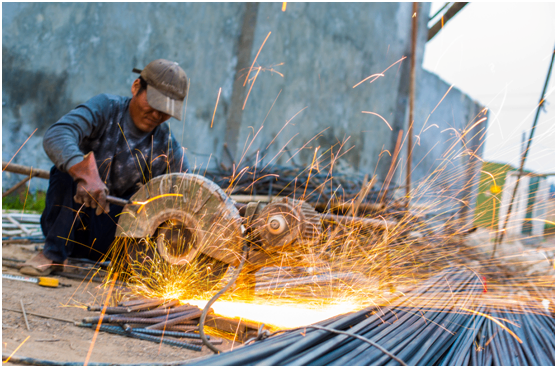On February 10, 2025, a piece of news attracted widespread attention in the steel industry - the Ministry of Industry and Information Technology issued the "Standardized Conditions for the Steel Industry (2025 Edition)". The introduction of this policy is like a stone thrown into a calm lake, which has set off waves in the steel industry and has a far-reaching impact on the future development of China's steel industry.
Image Source: 699.pic.com
For a long time, China's steel industry has been facing a series of problems while developing rapidly. For example, overcapacity, low industrial concentration, serious product homogeneity, and some companies also have deficiencies in environmental protection and energy consumption. Against the backdrop of increasingly fierce competition in the global steel market and the continuous adjustment of the Chinese economic structure, the steel industry urgently needs to transform and upgrade to achieve high-quality development. The "Standardized Conditions for the Steel Industry (2025 Edition)" came into being against this background.
The standardized conditions released this time are full of highlights. It has established a hierarchical and classified management system, and implements two-level evaluations of "standardized enterprises" and "leading standardized enterprises" for steel enterprises. "Standardized enterprises" include 6 first-level basic indicators such as basic requirements, process equipment, environmental protection, resource consumption, safe production, and quality management, as well as 20 second-level basic indicators such as compliant operation, production capacity compliance, and pollution discharge permits. Only enterprises that meet all the basic indicators can be selected. On the premise of meeting the basic indicators, "leading standardized enterprises" are selected based on 6 first-level leading indicators such as high-end, intelligent, green, efficient, safe, and special, as well as 32 second-level leading indicators such as the proportion of R&D investment, patent situation, and digital transformation level.
This move will bring many positive effects. For steel companies, clear standards and evaluation systems are like a beacon, pointing out the direction for corporate development. Enterprises can compare standards, check for omissions, increase investment in technological innovation, energy conservation and emission reduction, quality management, etc., and enhance their competitiveness. For example, in terms of environmental protection, enterprises will more actively adopt advanced environmental protection technologies and equipment to reduce pollutant emissions and achieve green production; in the field of intelligence, enterprises will accelerate digital transformation and improve production efficiency and product quality.
From the perspective of the industry, hierarchical and classified management can promote the gathering of factor resources to advantageous enterprises. Those enterprises with advanced technology, standardized management, and green environmental protection will receive more resource support, thereby further expanding and strengthening, and promoting the concentration of the industry. At the same time, this will also help to eliminate backward production capacity, optimize the industrial structure, improve the development level of the entire industry, and make China's steel industry more competitive in the international market.
Looking to the future, with the in-depth implementation of the "Standardized Conditions for the Steel Industry (2025 Edition)", China's steel industry is expected to usher in a new development pattern. Under the guidance of the norms, enterprises will continue to innovate and achieve sustainable development. We look forward to seeing that, driven by policies, China's steel industry will be able to shine more brightly on the global stage and contribute more to the national economic development and the progress of the global steel industry.

